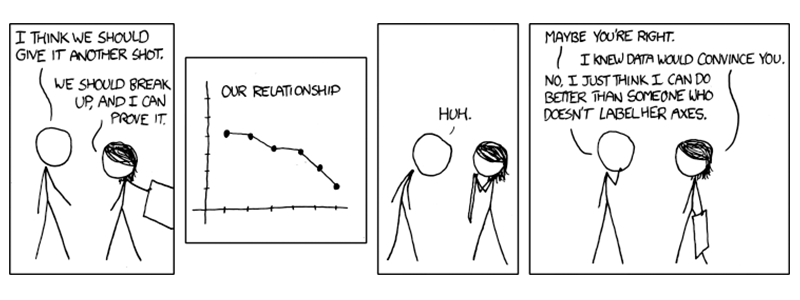By Catherine Webb and Nicola Gujer
In this blog series we pull apart the National Statement of Science Investment and scrutinise its use of data. In case you missed it, in our last post we checked out the graph on page 19, and what it says about New Zealand’s academic performance. This time we’re taking a look at page 18… because science.
Published on page 18 of the NSSI was a graph (Figure 1) representing “Academic Output” for New Zealand showing the amount of publications in each discipline and the quality of the output which was shown using field-weighted citation impact. We actually liked this graph; it seemed to show the information it claimed to (which sadly cannot be said about some of the other graphics in the NSSI). Alas, there was no numerical data or scale to be found on the graph. Yes, it showed the disciplines relative to each other, but surely adding a few values to an axis would make this a more effective graph. So recreating this graph, all it needed was a little sprucing up with some numbers and she’d be right (see Figure 2).
While recreating this graph, we came across the same issue as the NSSI with the data lower down becoming too small to be able to fit any labels to it. Unfortunately, this is just what will happen with this data, as the largest amount of publications is 19,993 for “Medicine” and the smallest amount is 401 for “Dentistry”. There is such a large gap between these that yes, it will be hard to have them both clearly visible and labelled.
A feature of this graph that definitely could have used some explanation would be the mean quality of output of NZ and SAEs. At first glance we thought the two averages were weighted by the quantity of publications in each field, since if we look at the NZ line it did not seem balanced by quality alone. Upon further examination of the graph, we noticed that the thin line towards the bottom of the graph was in fact “Multidisciplinary” (an annoyingly large number yet again). So this would explain why our average seemed larger. The mean lines that we have included on our graph are computed using a publication weighted mean. We are not exactly sure what MBIE did as we are not working with the same data as citations have accumulated over time.
These averages also raised the question of how accurate or even necessary these lines are. The lines shown represent the mean quality of output, but the distribution of citation counts for individual papers do not usually follow a normal distribution. Rather, citations tend to better fit a shifted power law distribution as the majority of publications may receive minimal or no citations, while a few highly cited publications will receive even more since when a publication is referenced often, awareness of it grows. This skewness increases over time meaning these average lines become less accurate. It is also likely that the amount of skewness differs between disciplines. A consequence of the skewed distribution is that the mean becomes a poor measure of the “average” value of the distribution. For heavy-tailed distributions, like a power law, the mean value will tend to be much larger than the median. This means that any statistics that are weighted by the mean will also be skewed. This makes it problematic to compare the average of New Zealand with the average of other small advanced economies, since the Field-Weighted Citation Impact does a poor job of normalising across fields.
Another difficulty in using citations to measure the quality of output is that while papers are usually highly cited when other researchers agree with their statements or use them to support their own research, high rates of citation can also occur for controversial or incorrect statements. Unfortunately, there doesn’t seem to be a more effective way of measuring quality of scientific publications so for now, we are stuck with our flawed metrics. Scientists do seem to love a sneaky approximation here and there.
*Featured image by XKCD comics.



